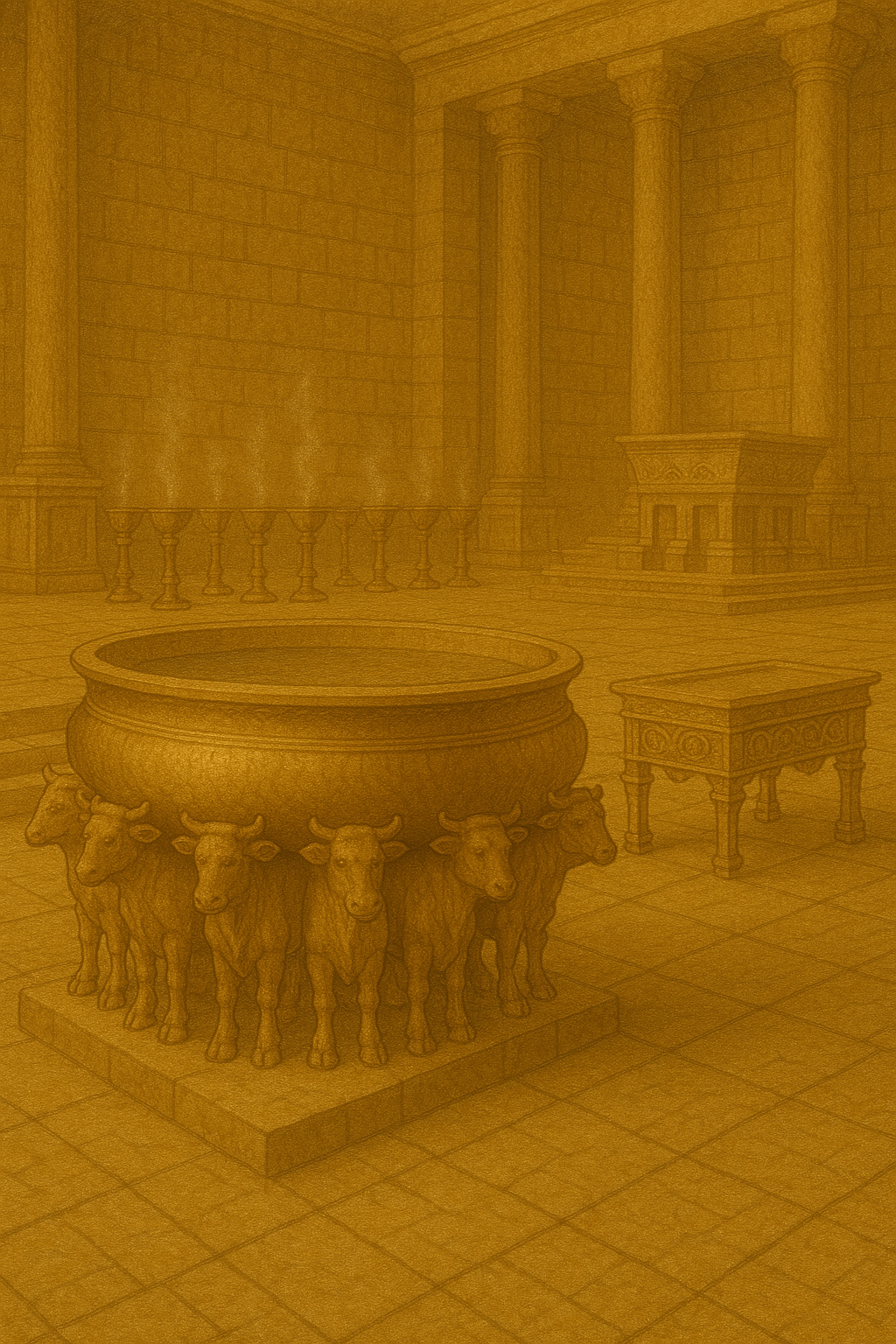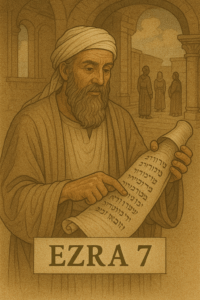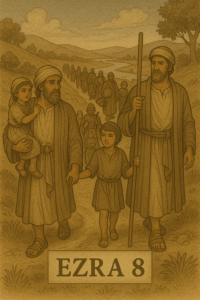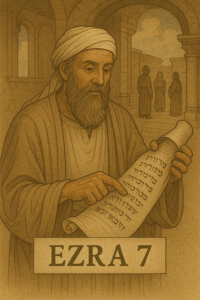2 Chronicles 4 – Divine Blueprint for Worship
This fascinating chapter provides a detailed inventory of the Temple’s sacred furnishings, revealing profound spiritual truths through their design and function. Let’s explore both the historical context and eternal significance of these holy objects.
1. The Bronze Altar: Where Heaven Meets Earth (v.1)
- Dimensions: 30x30x15 feet (based on 18″ cubit)
- Capacity: Could hold approximately 100 simultaneous sacrifices
- Spiritual Parallel:
- Foreshadows Christ’s cross (Hebrews 13:10)
- Represents our “living sacrifice” (Romans 12:1)
- Archaeological Note: Similar altars found at Arad and Beersheba confirm this design
2. The Bronze Sea: A Marvel of Engineering (v.2-5)
- Mind-Blowing Specifications:
- Held 16,500 gallons (3,000 baths)
- 12 bronze oxen symbolized 12 tribes
- Rim decorated with engraved gourds (1 Kings 7:24)
- Practical Function: Priests washed here before service (Exodus 30:18-21)
- Spiritual Application:
- Represents baptism (1 Corinthians 10:2)
- Symbolizes God’s cleansing Word (Ephesians 5:26)
3. The Ten Lavers: Mobile Cleansing Stations (v.6)
- Strategic Placement: Five north, five south of Temple
- Purpose: Washing sacrificial meat (2 Chronicles 4:14)
- Prophetic Significance:
- Number 10 represents divine order
- Points to complete cleansing in Christ
4. The Golden Implements: God’s Radiant Holiness (v.7-8,19-22)
| Object | Quantity | Material | NT Connection |
|---|---|---|---|
| Lampstands | 10 | Pure gold | Church as light (Rev 1:20) |
| Tables | 10 | Gold | Christ the bread (John 6:35) |
| Bowls | 100+ | Gold | Prayers of saints (Rev 5:8) |
5. Huram-Abi’s Bronze Masterpieces (v.11-18)
- The Craftsman: Half-Israelite, half-Tyrian (2 Chronicles 2:14)
- Notable Creations:
- Pillars (Jachin/Boaz)
- Shovels
- Meat forks
- Historical Confirmation: Josephus records these items existed until Roman destruction
7 Life-Changing Applications
- Excellence in Worship Matters – God deserved Solomon’s best materials and craftsmanship
- Cleansing Precedes Service – The bronze sea reminds us to approach God with clean hands and heart
- Christ Fulfills the Symbols – Every furnishing points to Jesus’ superior ministry
- God Appreciates Beauty – The Temple’s artistry reflects God as original Creator
- Unity in Diversity – Both Israelites and Gentiles (Huram) contributed
- Preparation is Holy Work – Years of planning preceded construction
- Our Bodies Are Now God’s Temple (1 Corinthians 6:19)
Interactive Study Questions:
- How do the Temple furnishings deepen your understanding of Christ’s work?
- Which object most captures your imagination and why?
- How can we apply the Temple’s “cleansing principle” before serving God today?
- What modern equivalents exist for these sacred objects in Christian worship?




